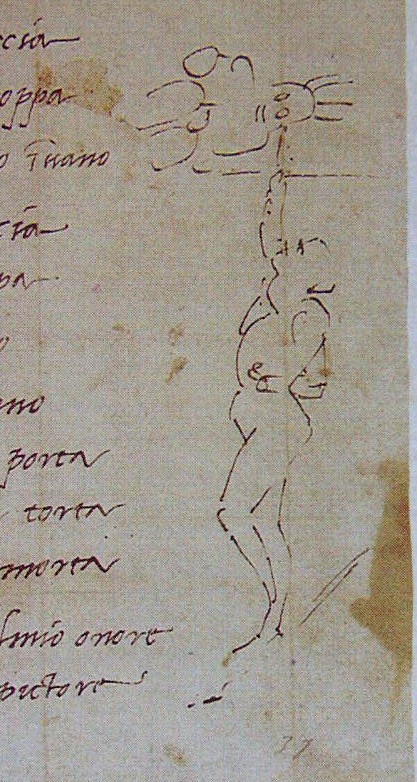Michelangelo Painting the Sistine Chapel
There is no denying that Michelangelo’s frescos on the ceiling of the Sistine Chapel in Rome are masterpieces, but did the great artist actually paint the ceiling while lying on his back on a scaffold high in the air? Well no, Buzzkillers, but this is one case where the truth is actually more amazing than the myth.
Pope Julius II ordered Michelangelo to perform a real miracle – or in any case, to perform an artistic feat at the borderline between the possible and the impossible. The Sistine Chapel had been built between 1477 and 1480, and it was named after Pope Sixtus IV. Some time in 1506, Pope Julius II thought to have the curved ceiling of the chapel painted. He ordered Michelangelo to take on the project, but the artist was more terrified than honored.
Julius was a tough customer – more like a military commander than a pontiff – and Michelangelo was not a painter by trade. He was a sculptor. He knew little about painting frescos, and he certainly knew nothing about painting larger-than-life frescos on curved ceilings. In spite of Michaelangelo’s attempt to leave town (literally) the Pope eventually had his way, as popes in those days tended to do. Michelangelo agreed to paint the ceiling, and signed the contract on May 10th, 1508.
He called upon some painter friends to help him get started, but soon realized that their methods would not work for him. He was stuck in a building whose very size was meant to inspire awe, and he had to figure out a way, daily, to mix plaster, trowel it across the ceiling, and then paint it before it had a chance to dry. Oh, and he had to do it all on a gigantic, curved ceiling above his head.
Before it was all over, Michelangelo would go through a long ordeal with major setbacks. At one point, for instance, he discovered mold growing on one of his brand new frescos. He begged the Pope to let him quit the project, but Julius refused, instead sending an expert to fix the mold problem and ordering Michelangelo to continue the work.
And what work it was! In order to paint the ceiling, Michelangelo had to design a scaffold sixty feet above the floor with supports bolted into the walls. In fact, if you visit the Sistine Chapel today, you can still see the places where the scaffold was attached. Michelangelo suspended a cloth screen below the scaffold to catch dripping plaster and paint.

He also caught quite a bit of plaster, dust, and paint on his own face between 1508 and 1512. But he did not paint the Sistine Chapel while lying on his back, Buzzkillers. That would have been too easy.
Michelangelo painted the Sistine Chapel while standing on a plank of wood with his head and upper body arched backwards and looking upwards toward the ceiling. And, of course, he had to paint the whole thing with his hands above his head. Any of you who’ve had to do work above your head like that know how quickly it becomes difficult and very painful.
In his notebooks, you can even find a little picture he drew of himself painting the chapel – and he also wrote a humorous poem about his discomfort.
I’ve grown a goitre by dwelling in this den–
As cats from stagnant streams in Lombardy,
Or in what other land they hap to be–
Which drives the belly close beneath the chin:My beard turns up to heaven; my nape falls in,
Fixed on my spine: my breast-bone visibly
Grows like a harp: a rich embroidery
Bedews my face from brush-drops thick and thin.My loins into my paunch like levers grind:
My buttock like a crupper bears my weight;
My feet unguided wander to and fro;In front my skin grows loose and long; behind,
By bending it becomes more taut and strait;
Crosswise I strain me like a Syrian bow:
Whence false and quaint, I know,Must be the fruit of squinting brain and eye;
For ill can aim the gun that bends awry.
Come then, Giovanni, try
To succour my dead pictures and my fame;
Since foul I fare and painting is my shame.
(from The Sonnets of Michael Angelo Buonarotti and Tommaso Campanella Now For the First Time Translated into Rhymed English, 1878)
For four years he inhabited the Sistine Chapel almost full time, and ate mostly onions and stale bread. He was so overworked and stressed-out before he finished that at one point he even told his father, “I don’t have any friends and I don’t want any.”
Such is the cost of beauty, Buzzkillers.
